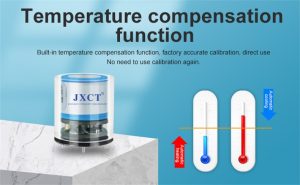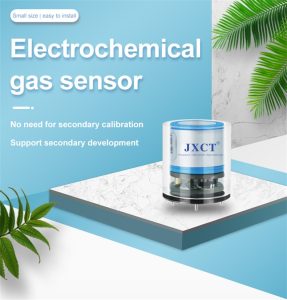Air pollution has become a significant global concern, impacting human health, the environment, and climate change. To effectively address this issue, accurate and reliable air quality monitoring is crucial. Advancements in gas sensor technology have played a vital role in enhancing air quality monitoring systems. This article explores the latest developments in gas sensor technology and their contribution to improving air quality monitoring.
Gas Sensor Technology:
Gas sensors are devices that detect and quantify the presence of specific gases in the environment. They work by measuring changes in electrical conductivity, optical properties, or chemical reactions when exposed to target gases. Traditional gas sensors were often bulky, expensive, and limited in their detection capabilities. However, recent advancements have led to the development of smaller, more affordable, and highly sensitive gas sensors.
Improved Sensitivity and Selectivity:
One of the key advancements in gas sensor technology is improved sensitivity and selectivity. New sensor materials, such as metal oxides, carbon nanotubes, and polymers, offer enhanced sensitivity, allowing for the detection of even trace amounts of gases. Additionally, selectivity has been improved by optimizing the composition and morphology of sensing materials. These advancements ensure that gas sensors can accurately identify specific gases, distinguishing them from other compounds present in the environment.
Miniaturization and Portability:
Gas sensors have become smaller and more portable, enabling their integration into various monitoring systems. Miniaturization has made it possible to deploy sensors in different locations, including indoor and outdoor environments, vehicles, and wearable devices. Portable gas sensors allow for real-time monitoring of air quality during everyday activities, making it easier to identify and avoid polluted areas. This portability has also facilitated the establishment of citizen science projects, where individuals can actively participate in monitoring air quality in their communities.
Wireless Connectivity and IoT Integration:
Gas sensors now often come equipped with wireless connectivity options, enabling seamless integration into the Internet of Things (IoT) networks. This connectivity allows for remote monitoring and data transmission in real-time. IoT integration has revolutionized air quality monitoring, making it possible to create extensive networks of interconnected sensors. These networks provide comprehensive spatial coverage, enabling a more accurate assessment of air pollution levels across different locations.
Data Analysis and Visualization:
Advancements in gas sensor technology have not only improved data collection but also data analysis and visualization capabilities. Sophisticated algorithms and machine learning techniques are being employed to interpret the vast amounts of data collected by gas sensors. These algorithms can identify patterns and trends, detect anomalies, and provide predictions on air quality conditions. Furthermore, visualization tools present the collected data in a user-friendly manner, making it easier for policymakers, researchers, and the public to understand and take action based on the information.
Real-Time Monitoring and Early Warning Systems:
Gas sensors enable real-time air quality monitoring, allowing for immediate responses to pollution events. Governments and regulatory agencies can set up early warning systems using gas sensors that trigger alerts when pollution levels exceed predefined thresholds. These systems are crucial for protecting public health, as they enable authorities to promptly implement measures to reduce exposure to harmful pollutants. Real-time monitoring also helps identify pollution sources, facilitating targeted interventions and mitigation strategies.
Integration with Air Pollution Mitigation Strategies:
Gas sensors are becoming increasingly integrated with air pollution mitigation strategies. For example, gas sensors can be deployed near industrial facilities to monitor emissions and ensure compliance with environmental regulations. In cities, sensors can be strategically placed to identify pollution hotspots, leading to the implementation of effective traffic management or urban planning initiatives. By providing actionable data, gas sensors contribute to the development and implementation of evidence-based policies and practices aimed at reducing air pollution.
Public Awareness and Citizen Engagement:
Gas sensors have also helped raise public awareness about air quality issues. Citizen science projects that involve community members in monitoring air quality have gained popularity, thanks to the availability of affordable and portable gas sensors. These projects empower individuals to actively contribute to data collection efforts, fostering a sense of ownership and responsibility for their local environment. Increased public awareness can drive
 : +86 155 8830 2704
: +86 155 8830 2704 : jxdziot@gmail.com
: jxdziot@gmail.com
